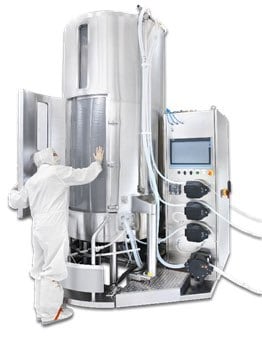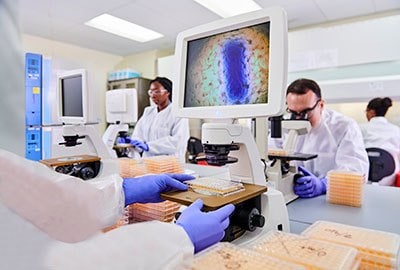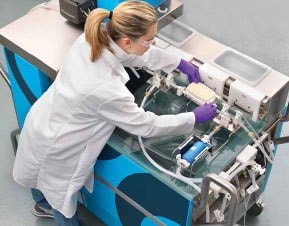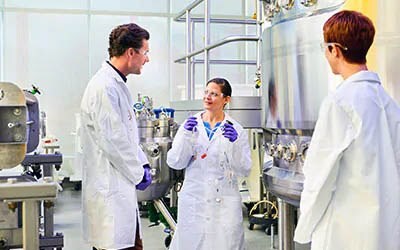Preventing Adventitious Agent Contamination in Your mAb Process

Bioreactors used for monoclonal antibody (mAb) production are at particular risk of contamination from adventitious agents. Contamination events interrupt manufacturing schedules, resulting in lost revenue and potential disruption of drug supply. Traditional measures to prevent upstream contamination focus on careful sourcing and selection of raw materials, comprehensive testing for the presence of viral contaminants, and implementation of technologies that prevent virus from entering production processes.
High-profile viral contamination events have led biomanufacturers to re-examine risk assessments around viral safety. As a result, many biomanufacturers are implementing additional measures upstream of the bioreactor to mitigate the risk of viral contamination.
HTST Pasteurized Glucose
Glucose is a critical component of many cell culture media and is generally regarded as a high-risk raw material for viral contamination. This high-risk designation arises from the plant origin source (sugarcane or beet fields), coupled with its innate attractiveness to virus-carrying rodents. High temperature short time (HTST) pasteurization of glucose solutions enables robust clearance of viruses with high physico-chemical resistance. This point-of-origin solution mitigates the risk of viral contamination in high-risk cell culture media components, without compromising cell culture performance.
Virus-Retentive Filters for Cell Culture Media
Filtration is a familiar, easy-to-use technology that can be implemented to reduce the risk of bioreactor contamination. The advantages of virus-retentive filters designed specifically for efficient processing of cell culture media include:
- Removal of both enveloped and non-enveloped viruses, in addition to bacteria and mycoplasma
- Improved process economics compared to use of downstream virus filters
- Maintained cell culture performance
Non-Animal Origin and Chemically Defined Raw Materials
Contamination often originates from raw materials and animal-derived components, such as bovine serum or trypsin. Raw materials and animal-derived components at high risk of virus contamination can be replaced with lower-risk alternatives, such as chemically-defined cell culture media and non-animal origin recombinant supplements.
Genetically Modified Virus-Resistant CHO Cell Lines
The risk of bioreactor contamination with an adventitious virus, such as Minute Virus of Mice (MVM), is a challenge for all biomanufacturers. Chinese Hamster Ovary (CHO) cells that are resistant to MVM infection have been developed and are a powerful tool to prevent bioreactor contamination.
Related Technical Resources
HSTS Pasteurized Glucose
Article: Efficacy of Minute Virus of Mice (MVM) Inactivation Utilizing High Temperature Short Time (HTST) Pasteurization and Suitability Assessment of Pasteurized, Concentrated Glucose Feeds in Chinese Hamster Ovary (CHO) Cell Expression Systems
Application Note: High Temperature Short Time Pasteurization
Webinar: HTST Pasteurization of Cell Culture Feeds for Upstream Viral Safety
Virus-Retentive Filters for Cell Culture Media
Webinar: Using Nanofiltration to Prevent Virus Contamination of Cell Culture Processes
Webinar: Bioreactor Protection with the Viresolve® Barrier Filter
Poster: Implementation of a Virus Barrier Media Filter into Fed-batch Bioprocesses
Poster: Upstream Virus Safety: Protect Your Bioreactor by Media Filtration
White Paper: Upstream Viral Safety - A Holistic Approach to Mitigating Contamination Risks
Non-Animal Origin and Chemically Defined Raw Materials
Webinar: Bioprocessing Raw Materials: Risk Mitigation Strategies
Genetically Modified Virus-Resistant CHO Cell Lines
Webinar: Genetic Engineering of CHO Cells for Viral Resistance to MVM
White Paper: MVM Resistance through Genetic Engineering
Workflow


Removing Viruses Downstream
Implementation of technologies to remove or inactivate viruses and execute clearance studies that demonstrate process safety.

Monoclonal Antibody Manufacturing
Monoclonal antibody manufacturing is a highly templated approach used to produce mAb-based immunotherapies. Robust, scalable process solutions are required at every step to ensure high therapeutic concentration and process safety, while meeting speed-to-market and cost containment concerns.
To continue reading please sign in or create an account.
Don't Have An Account?